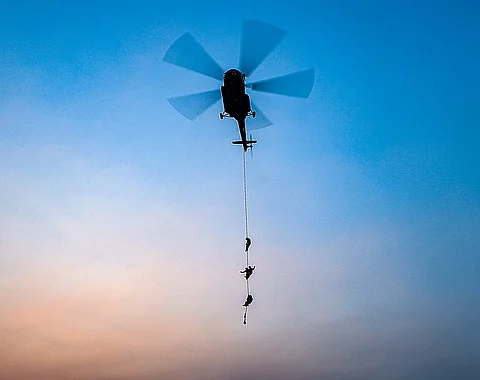

It is 1970, three years after the disastrous six-day-war of 1967. The Egyptian state's capabilities are considered fractured, and Israel is deemed superior on all fronts without question. This was the general viewpoint of the American administration and Western leaders at the time. Even socialist states from the East believed that Israel had a qualitative advantage over its Arab adversaries, particularly in intelligence operations.
On March 10, 1970, however, President Nixon received his routine intelligence briefing, as is customary for all American presidents, and was surprised by a particular development: Egypt had attacked Israel in Côte d'Ivoire. An Israeli oil driller was heavily damaged and later deemed unsalvageable, ultimately being scrapped. But how did we get here?
After the Israeli occupation of Sinai following the 1967 defeat, Israel gained control over large oil reserves. Economic self-sufficiency, particularly in oil, was considered a national priority. During times of active conflict, Israeli oil reserves would sometimes drop to dangerously low levels—an issue acknowledged by both officials and military officers.
At that time, the Israeli government announced plans to drill for oil in the Sinai. This was seen as a direct violation of Egypt’s sovereignty and provoked significant outrage. In response, President Nasser ordered the destruction of the oil driller—at any cost.
The oil driller in question was Canadian manufactured, and so had to be towed to Israel, it was intended to sail through the Atlantic and go through the Cape of Good Hope, where it would enter the Red Sea and then into Israeli occupied Sinai, but, of course, it had to make stops on the way, and the Egyptians would later find out that the stop was in Côte d'Ivoire
Egypt faced numerous challenges at the time. Given the strategic importance of the oil rig to Israel, it was highly likely that Israeli personnel, including Mossad officers and an armed escort, would be attached to it. Additionally, conducting an operation outside Egyptian borders presented significant difficulties, as Egyptian intelligence services were not as developed as agencies like the CIA, and they faced limitations in assets, support, and funding. Further complicating the mission was the fact that the Apollo 12 astronauts were on a world tour and would be in Abidjan at the same time the oil rig was docked. This meant an increased security presence, including American federal escorts, as NASA astronauts—many of whom were pilots and military officers—required protection.
But orders were orders, the instructions of the Egyptian president was clear, the oil drill could not make it to Sinai at any cost, no matter what.
At this time, an infiltration method with a plausible cover was proposed—Egyptian intelligence officers and operatives would be sent to Abidjan under the pretense of producing a film titled Aoumasha in the Jungle. The movie was intended to be a comedy about an Egyptian adventurer navigating the jungles. On the surface, it appeared to be an ordinary film production. However, the quality of the movie was reportedly subpar and is not considered one of Fouad El Mohandes' finest works.
With a plausible cover in place, the operation was set in motion. While the exact minute-by-minute details remain unknown, it is confirmed that Egyptian frogmen and intelligence officers were involved. They managed to infiltrate the port undetected, moved underwater to plant explosives beneath the oil driller, and then exited through the main gate without raising any suspicion. The explosives later detonated, crippling the Canadian oil driller, which never made its way to Sinai.
Egypt never officially claimed responsibility for the attack until 1985, when the former director of the General Intelligence Services, Amin Howeidi, confirmed it. However, CIA briefings and records indicate that both the Americans and Israelis immediately suspected Egypt. In response, Israel was expected to launch retaliatory strikes targeting Egyptian oil facilities.
The oil driller was gone, the Canadians were never compensated, and the orders of the President of the Arab Republic of Egypt were fulfilled—a successful operation by all accounts. It demonstrated that, even in difficult times, operations against Israel could be carried out professionally, without loss of life or civilian collateral damage. This proved that Egyptian intelligence capabilities were not to be underestimated and that they could effectively accomplish the objectives assigned by political leadership.
Had the Israelis taken this incident more seriously, they might have recognized similar intelligence work being prepared to deceive them in the 1973 war—one of the greatest intelligence failures in Israel’s history. Fortunately for Egypt, Israeli overconfidence prevented them from seeing the pattern in 1970, leaving them unprepared in 1973. Similarly, in the lead-up to October 7, 2023, Israel observed the same warning signs but failed to act decisively, only to express shock when Hamas breached the border. Even after 50 years, lessons can still be learned, and the same principles remain true.